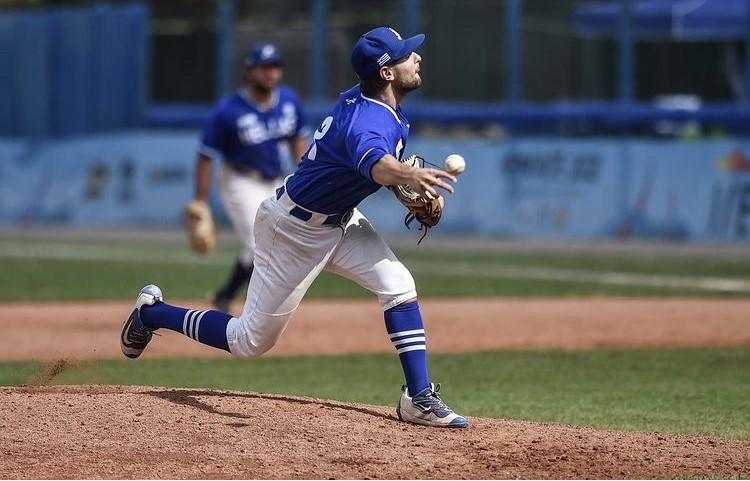Yanni Orfandis: RHP Greek National Team
1. Could you tell us your story on dropping down?
My story on dropping down starts in high school. I was a promising shortstop coming up to varsity from jv my junior year. Unfortunately, my skill set at short did not translate well on that level, and I was ultimately cut. After a few months away from the game, I knew that wasn’t how I wanted to go out. I started experimenting with different way of throwing the ball. I was an overhand pitcher in middle school, but I had fractured my elbow due to the amount of stress I was putting on it. I started throwing sidearm in that winter off the mound. It just felt right, the same exact way I would throw the ball around the infield from short. I regained my spot on the team as the closing pitcher. Now 6 years later, I’m still going strong.
2. What are some of the advantages you have from your arm angle?
Some advantages from my slot are definitely having a lot of movement which makes hitters uncomfortable. Another major advantage is being able to get away with velocity drop. Guys who throw overhand are expected to be hitting mid-90’s in today’s game. Someone from my slot can throw mid-80’s and certainly be effective (even lower for submarine slot).
3. If you didn't drop down, do you think you would have had the same success?
I can positively tell you that if I did not make the decision to drop down that I would not be playing anywhere near the level I’m currently playing at.
4. What would you tell someone debating on changing their arm angle?
Try it. It’s much less stressful on the arm than an overhand slot. A good place to start working on it is casual catch play. You can even start by skipping rocks on a pond (that was one of my first training methods). I see more and more pitchers beginning to mix in a sidearm arsenal even with their overhand arsenal. Nestor Cortes on the Yankees is the perfect example of this, it is EFFECTIVE.
5. Are there any mechanical tips that you'd give to someone throwing sidearm/submarine?
A mechanical tip I’ve been big on in my collegiate career is staying closed with the front shoulder. That is one of my biggest queues on the mound still, especially on my slider. Staying closed allows for the body to remain still and more in control. We want to be able to control our bodies and let the movement of our ball do the work. A drill I do for this in catch play is lunging forward and backward while keeping the front shoulder closed off to the catcher the whole time. When I release the ball, I want to exaggerate the follow through while staying closed as long as I can. This creates good torque on the mound.
6. What pitches do you throw?
I throw a 2 seam fastball, slider, changeup, and 4 seam fastball from the sidearm slot. The idea behind my pitches is that I want every ball I throw to move a different way. Throwing this arsenal of pitches allows for me to get that. There may be an outing when I don’t have a specific pitch going for me and I will still feel confident because I can be effective around the zone with only 2 of these pitches. I don’t have a ton of velocity on these, maybe low 80’s on the 2 seam and mid 80’s on the 4 seam, this is why the movement and deception are very key. I will also mix in an overhand fastball at like 4mph harder than my sidearm pitch and 12-6 breaking ball at a random point in my outing to give the opposing batters something extra to think about it, it’s pretty fun seeing reactions to that sometimes.
7. How do you pitch to lefties/righties?
Unless there is a specific batter that I’m worried about and have a scouting report for, I just try to fill up the zone with my best stuff and compete. The game is a lot more fun that way. The mindset is always to stay around the zone and let the movement of my pitches miss barrels or induce weak contact.
8. What is your favorite part about pitching from down there?
My favorite part about pitching from down under is the creativity that comes with it. I don’t want two pitches I throw to seem the same. Whether it’s movement of the ball, delivery times, arm slots, there is going to be something different about almost every pitch I throw in an outing. My other favorite part is that I’m always learning! 90% of the time when I meet someone who throws from my angle there is something I can take away and incorporate into my training regimen.





